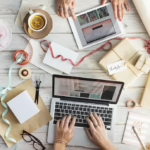Visualize Your Lungs: A Detailed Look at Respiratory System Diagrams
The human respiratory system is an intricate network that enables the exchange of gases, allowing oxygen to be absorbed into the bloodstream and carbon dioxide to be expelled. Understanding how this system works can be greatly enhanced through visual aids like diagrams. In this article, we’ll take a deep dive into the respiratory system, exploring its anatomy, functions, and how various diagrams can help simplify complex concepts.
The Anatomy of the Respiratory System
The respiratory system comprises several key components that work together to facilitate breathing. Understanding the anatomy is essential for interpreting diagrams effectively.
Major Components
-
Nasal Cavity: Air enters through the nostrils, where it is filtered, warmed, and moistened.
-
Pharynx: This is a muscular tube that serves both the respiratory and digestive systems. It directs air toward the larynx and food toward the esophagus.
-
Larynx: Often referred to as the voice box, the larynx contains the vocal cords and plays a crucial role in sound production.
-
Trachea: Commonly known as the windpipe, the trachea connects the larynx to the bronchi. It is lined with cilia and mucus to trap particles.
-
Bronchi and Bronchioles: The trachea bifurcates into two primary bronchi, which further divide into smaller bronchioles within the lungs. These airways facilitate airflow.
-
Lungs: The lungs are the primary organs of respiration. They house the alveoli, where the gas exchange occurs.
-
Alveoli: Tiny air sacs at the end of bronchioles, the alveoli are surrounded by capillaries. This is where oxygen enters the bloodstream, and carbon dioxide is expelled.
- Diaphragm: This dome-shaped muscle under the lungs is crucial for inhalation and exhalation. Its contraction increases thoracic volume, allowing air to flow in.
Functionality Explained through Diagrams
Diagrams of the respiratory system often include labeled parts to help visualize these components. They can clarify functions such as the pathway of air, the mechanics of breathing, and how oxygen and carbon dioxide are exchanged.
The Breathing Process
A diagram illustrating the breathing process can depict two essential phases: inspiration (inhalation) and expiration (exhalation).
-
Inspiration involves the diaphragm contracting, which increases lung volume and decreases pressure, causing air to flow in.
- Expiration occurs when the diaphragm relaxes, decreasing lung volume and increasing pressure, pushing air out.
Understanding these processes visually can help reinforce the physiological concepts.
The Role of Diagrams in Understanding Respiratory Health
Diagrams are not only helpful for understanding the basic anatomy and functions of the respiratory system; they also serve important roles in education, healthcare, and public awareness.
Educational Tools
In educational settings, clear and accurate diagrams can enhance learning. Students studying biology can benefit greatly from visual representations, allowing them to grasp complex systems more easily. For example:
-
Illustration of Gas Exchange: A diagram showing oxygen entering the alveoli and carbon dioxide exiting highlights the process of gas exchange at a cellular level, simplifying comprehension for students.
- Pathology Illustrations: Diagrams depicting various respiratory conditions, such as asthma or COPD, can illustrate how these diseases affect normal lung function.
Healthcare Applications
In the healthcare field, diagrams can play a vital role in patient education. Patients often have difficulty understanding their respiratory conditions or treatments. Effective diagrams can:
-
Explain Procedures: Illustrations showing how a bronchoscopy or lung function test is performed can provide clarity.
- Illustrate Symptoms: An infographic displaying symptoms of respiratory ailments can help patients recognize when to seek medical attention.
Public Awareness Campaigns
Public health organizations often use infographics and diagrams in campaigns to inform the public about respiratory health. These can include:
-
Smoking Awareness: Diagrams illustrating the harmful effects of smoking on lung tissue or overall respiratory health can be persuasive.
- Influenza Education: Visual aids that show how respiratory infections spread can encourage preventative measures like vaccinations and hygiene practices.
Types of Respiratory System Diagrams
Different types of diagrams serve various educational and communicative purposes. Here are a few common categories:
Anatomical Diagrams
Anatomical diagrams provide a detailed view of the respiratory system’s structure. These diagrams often label each component and are used in both textbooks and healthcare settings.
Flow Diagrams
Flow diagrams can illustrate the process of breathing, gas exchange, and the circulatory system’s interaction with the respiratory system. These can simplify complex processes into sequential stages.
Sample Flow Diagram
- Air Inhalation: Air enters the nasal cavity.
- Airway Passage: Air moves through the pharynx, larynx, and trachea into the bronchi.
- Lung Entry: Air travels through bronchioles to the alveoli.
- Gas Exchange: Oxygen passes into the bloodstream while carbon dioxide is expelled.
Comparative Diagrams
These diagrams can compare healthy lung function to that impaired by illness. By illustrating how diseases like asthma or pneumonia affect normal anatomy and function, these diagrams provide context for the impact of respiratory illnesses.
Understanding Diseases through Diagrams
The respiratory system is susceptible to a variety of illnesses, many of which can be better understood through diagrams. Here, we’ll look at a few key diseases and how visual representations can elucidate their effects.
Asthma
Asthma is a condition characterized by the inflammation of the airways, leading to difficulty breathing. Diagrams illustrating the asthmatic airway show the constriction and inflammation that can occur during an asthma attack, helping patients visualize the severity of their symptoms.
Chronic Obstructive Pulmonary Disease (COPD)
COPD encompasses several disorders, including chronic bronchitis and emphysema. Diagrams can effectively illustrate the damage done to lung tissue, the enlargement of alveoli, and decreased airflow. These visuals can enhance understanding of disease progression and the importance of management strategies.
Pneumonia
Diagrams showing the lungs affected by pneumonia can clarify how fluid buildup impairs gas exchange. Such illustrations can emphasize the significance of prompt treatment and awareness of symptoms.
Enhancing Diagram Comprehension
For diagrams to be effective, several design principles should be considered:
-
Clarity: Use clear labels and avoid clutter to help viewers focus on essential parts.
-
Color Use: Different colors can help differentiate parts of the system and draw attention to critical areas, such as diseased tissues.
-
Simplicity: Simplicity enhances understanding. Avoid overly complicated diagrams that may confuse rather than inform.
- Contextual Information: Provide contextual information alongside diagrams to explain what viewers are seeing and why it matters.
Conclusion
The respiratory system plays an essential role in human health, and understanding its complexities can be greatly aided by visual representations. Diagrams are invaluable tools for education, healthcare, and public awareness, allowing individuals to comprehend anatomy, functionality, and the impact of various diseases. By continuing to utilize and enhance these educational tools, we can promote better understanding and appreciation of our respiratory health.
References
- [1] "The Human Respiratory System," National Heart, Lung, and Blood Institute.
- [2] "Asthma," American Lung Association.
- [3] "Chronic Obstructive Pulmonary Disease," Mayo Clinic.
- [4] "Understanding Pneumonia," Centers for Disease Control and Prevention.
- [5] "Visual Learning in Science," Journal of Science Education Research.


























Add Comment